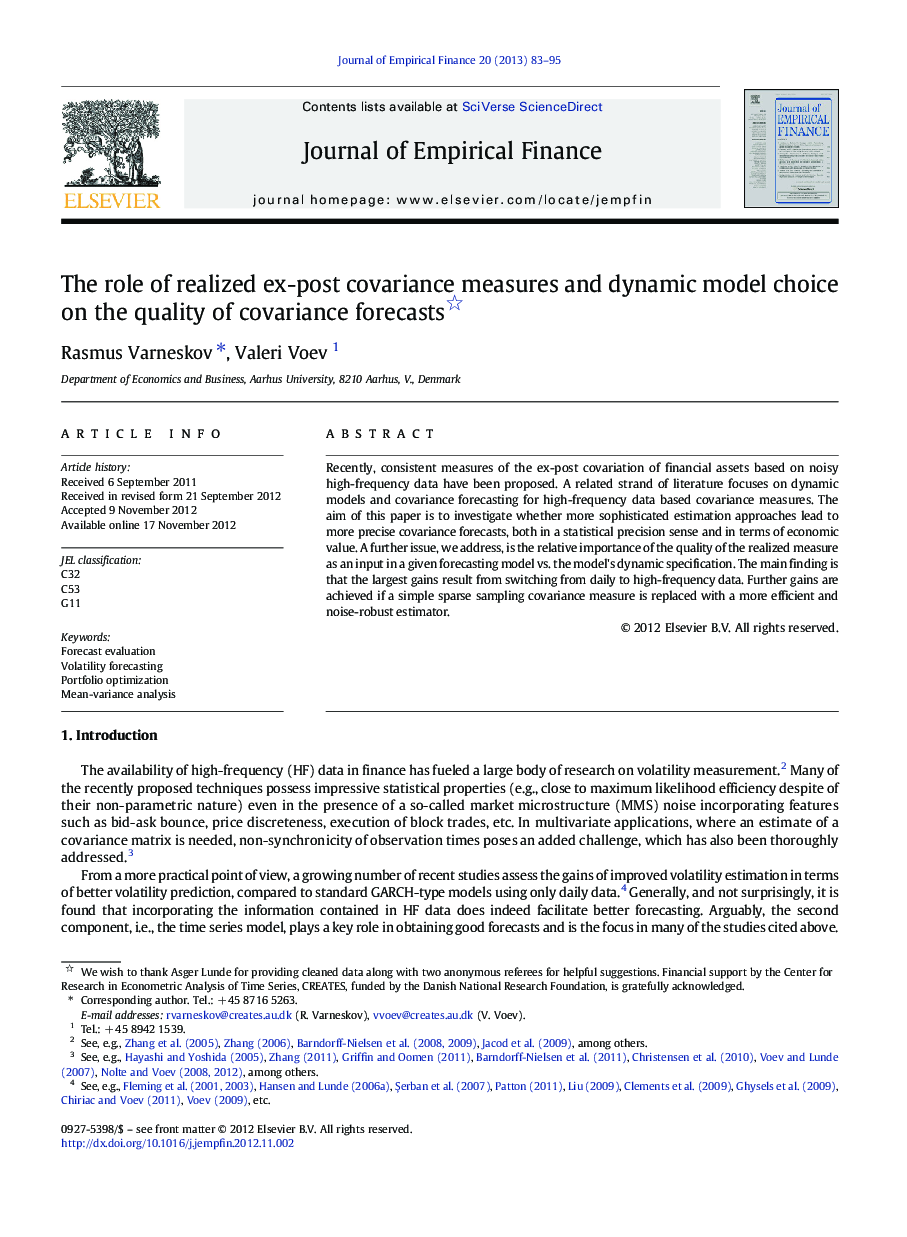| Article ID | Journal | Published Year | Pages | File Type |
|---|---|---|---|---|
| 958791 | Journal of Empirical Finance | 2013 | 13 Pages |
Recently, consistent measures of the ex-post covariation of financial assets based on noisy high-frequency data have been proposed. A related strand of literature focuses on dynamic models and covariance forecasting for high-frequency data based covariance measures. The aim of this paper is to investigate whether more sophisticated estimation approaches lead to more precise covariance forecasts, both in a statistical precision sense and in terms of economic value. A further issue, we address, is the relative importance of the quality of the realized measure as an input in a given forecasting model vs. the model's dynamic specification. The main finding is that the largest gains result from switching from daily to high-frequency data. Further gains are achieved if a simple sparse sampling covariance measure is replaced with a more efficient and noise-robust estimator.
► We study the precision of covariance forecasts using various covariance estimators. ► We use both statistical and economic evaluation criteria. ► We find that the largest gain comes from switching from daily to high-frequency data. ► We show that the covariance measure is more important than dynamic model specification.
